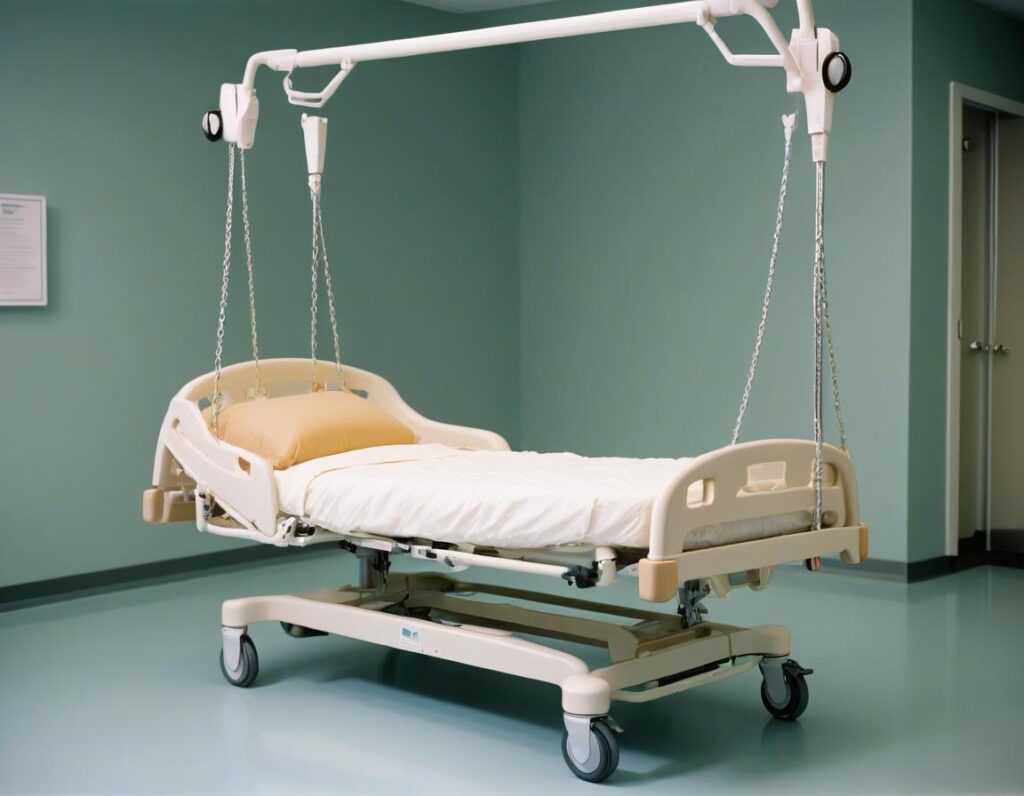For healthcare providers, caregivers, and patients navigating post-acute care options, the term “swing bed” may become a valuable—yet often underutilized—resource. Designed to offer flexibility in patient care, swing beds are critical in bridging the gap between acute hospital care and home-based recovery.
This guide will break down the concept of swing beds, their purpose, who can benefit from them, and how they’re revolutionizing transitional care in healthcare facilities nationwide.
What is a Swing Bed?

Simply put, a swing bed is a hospital bed that can “swing” between different care settings. The program is typically found in rural or critical-access hospitals (CAHs), enabling these facilities to repurpose beds originally designed for acute care into post-acute or skilled nursing care.
The term “swing” reflects the dual purpose these beds serve. A swing bed can shift from being part of an acute care service (such as post-surgery recovery) to being part of a skilled nursing arrangement (like physical therapy or wound care during recovery).
Swing beds fall under Medicare Part A and are subject to strict guidelines. However, their flexibility makes them vital in providing patients with quality, more personalized care after discharge from the primary hospital stay.
Why Are Swing Beds Important?

The importance of swing beds lies in the continuity of care they provide. Patients, particularly those in rural or underserved areas, often find themselves stuck between leaving the hospital too early and not requiring the extensive care of a nursing home. Swing beds address this issue in several ways:
Seamless Transition: They reduce the risk of readmission by ensuring patients receive an intermediate level of care before heading home.
Improved Accessibility: Swing beds allow rural hospitals to keep post-acute patients closer to home, providing convenience and family support.
Efficient Use of Resources: Swing beds maximize resource utilization for healthcare facilities. Hospitals with underused acute care beds can repurpose them for rehabilitation or recovery, improving service delivery.
This combination of benefits makes swing beds a win-win for patients and healthcare providers.
Who Benefits from Swing Bed Programs?
Swing bed programs cater to patients who may not yet be ready for independent living but no longer require full-on hospital care. Here are some groups of beneficiaries:
Patients Recovering from Surgery or Illness

For patients who have undergone surgeries like hip replacements, cardiac procedures, or serious illnesses such as pneumonia, swing beds provide an environment conducive to recovery. Services like physical therapy, occupational therapy, and IV antibiotic therapy are typically available.
Patients Managing Chronic Conditions
Patients with chronic conditions such as diabetes, COPD, or heart disease often need additional medical oversight before transitioning to home-based care. Swing beds allow for extended monitoring and education to prevent complications.
Individuals Requiring Short-term Rehabilitation
Mobility is key to independence, especially for elderly patients. Swing beds often comprise short-term rehabilitation programs, ensuring patients regain their strength and skills before returning to regular routines.
Rural Patients with Limited Healthcare Access
For patients in rural communities, accessing long-term care facilities or rehabilitation centers may not be feasible due to distance. Swing bed programs offer a convenient solution by leveraging the local hospital’s resources.
What Services are Typically Offered in Swing Bed Programs?
Swing bed programs provide a highly personalized care environment. Services may differ slightly based on the facility, but most programs include the following key areas of care:
Physical Therapy and Rehabilitation
Patients will benefit from hands-on care to improve strength, mobility, and overall independence. Therapists often work with patients recovering from surgery, strokes, or injuries.
Wound Care
For patients discharged from acute care but still requiring wound management, swing beds allow specialized care delivered by trained nurses.
Medication Management
Patients who need antibiotics, IV medications, or specialized therapies such as pain management will find continuity in a swing bed program.
Nutritional Counseling and Support
Nutrition often plays a vital role in recovery, and patients in swing beds may receive tailored plans from dieticians to optimize their healing processes.
Occupational Therapy
From learning how to get dressed to using mobility aids safely, occupational therapy is another core service provided.
How Do Swing Bed Programs Work Within Medicare?
Medicare is pivotal in swing bed programs, particularly for patients over 65. Under Medicare Part A, swing bed care can be covered if specific conditions are met:
- The patient must require skilled nursing or therapy services daily.
- A physician must certify the patient’s need for continued care in a swing bed setting.
- The patient must have had a qualifying hospital stay of at least three consecutive days.
It’s important to note that while Medicare covers 100% of costs for the first 20 days, a co-payment will be required from day 21 to day 100.
How Do Swing Beds Benefit Healthcare Providers?
Swing beds don’t just benefit patients; they’re also a strategic asset for healthcare providers, particularly rural hospitals. Here’s how:
Optimized Bed Utilization
Swing beds help hospitals use underutilized acute care beds effectively, reducing idle resources and maximizing revenue streams.
Improved Patient Outcomes
By offering seamless transitions for patients requiring extended care, hospitals participating in swing bed programs see a decrease in readmission rates and better long-term health outcomes for patients.
Expanded Community Trust
When rural hospitals provide comprehensive recovery and rehabilitation services through swing programs, they build stronger relationships within their communities by keeping care local.
Frequently Asked Questions About Swing Beds
1. Can any hospital offer swing bed programs?
Swing bed programs are commonly found in Critical Access Hospitals (CAH) and small rural facilities. Not all hospitals are eligible.
2. How long can a patient stay in a swing bed?
The length of stay depends on the patient’s medical needs and Medicare or insurance coverage limits.
3. Are swing beds the same as nursing homes?
No, swing beds are designed for short-term recovery and rehabilitation, while nursing homes typically provide long-term custodial care.
4. Does private insurance cover swing bed services?
Coverage varies widely. Patients should consult their policies or speak with hospital financial counselors.
Delivering Care and Confidence Through Swing Beds
Swing beds are a game-changer for patients and healthcare providers alike. They offer a unique combination of flexibility and support, ensuring patients receive the care they need during a critical point in recovery. Meanwhile, rural hospitals can optimize their resources and strengthen ties to their community.
Whether you’re a healthcare professional looking to expand your facility’s services, a caregiver seeking the best recovery option, or a patient exploring possibilities, swing beds offer an invaluable solution.
If you want to learn more about how swing beds can enhance care delivery at your facility, contact experts in transitional healthcare today.











